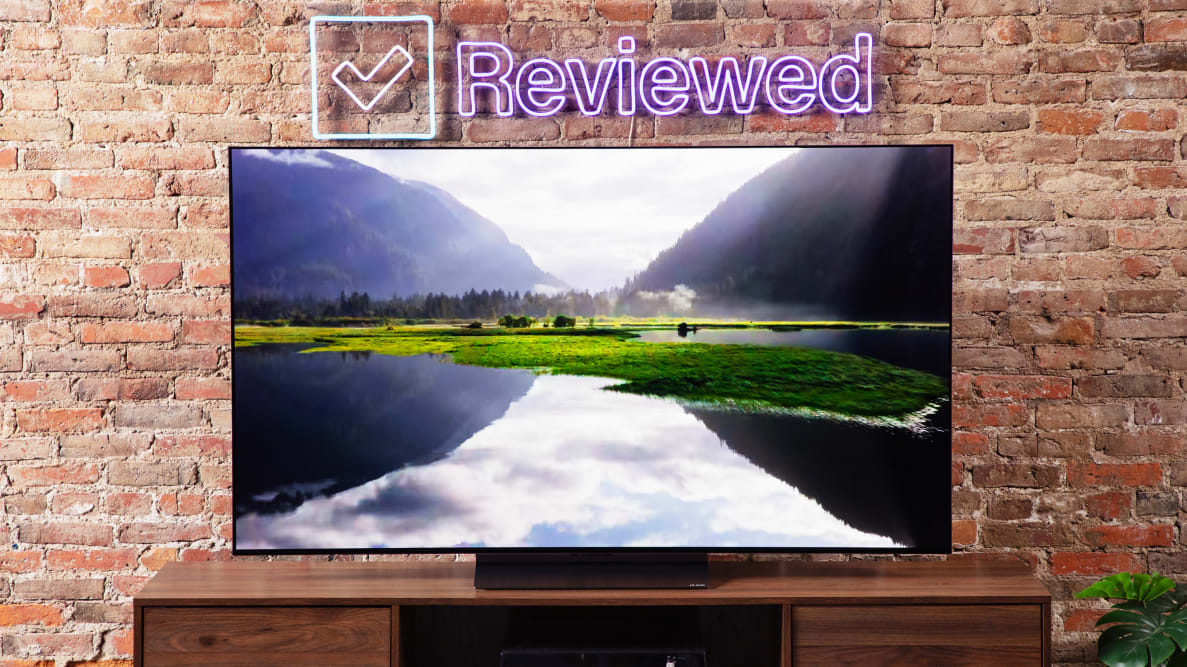Pros
-
Incredible contrast
-
Vivid, accurate color
-
All the gaming features you’ll need
Cons
-
So-so smart platform
-
Not as bright as competitive OLEDs
Editor's note: Trying to decide between the brand new C3 and our favorite overall TV from last year, the C2? We compared the two to help you decide.
The C3 lives up to the legacy of its namesake with one of the best pictures money can buy. But whereas the C2 was a significant step forward for the C Series thanks to implementing OLED evo panel technology, the C3 is more of a baby step. It also has an OLED evo panel, so it’s only brighter than the C2 by a hair, and the picture processing benefits don’t stand out as much this year.
Critically, however, we’re right in the middle of a sizable shift in the OLED marketplace. Considerably brighter, year-old OLED TVs (like the Samsung S95B) are heavily discounted at the time of publishing. Pricier OLED TVs that promise brighter performance (like LG’s own G3 and the Samsung S95C) are either currently or soon available. If that wasn’t enough, Samsung is on the verge of releasing a pared-down version of its flagship OLED that will cost exactly the same as the LG C3. All told, you might be tempted to save money on a year-old TV, or to wait and see how the new OLED models shake out.
Still, it’s nearly impossible to not be impressed by the C3—even if, like me, you’ve seen plenty of TVs in your day. Its picture quality is remarkable, and if you’re an A/V enthusiast or dedicated gamer, it’s one of the best options available today.
About the LG C3
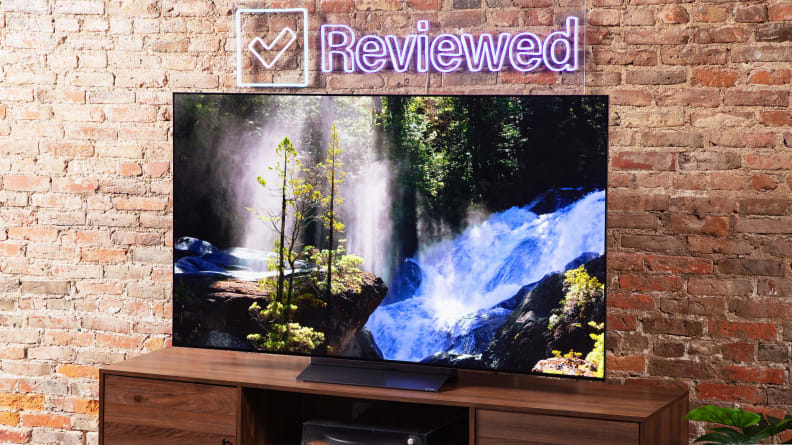
The LG comes in six sizes—42, 48, 55, 65, 77, and 83 inches.
The LG C3 is available in six total sizes, ranging from 42 to 83 inches. Our review unit is a 65-inch model that we received on loan from LG.
Here’s how the series shakes out in terms of pricing:
- 42-inch (LG OLED42C3PUA), MSRP $1,399.99
- 48-inch (LG OLED48C3PUA), MSRP $1,499.99
- 55-inch (LG OLED55C3PUA), MSRP $1,899.99
- 65-inch (LG OLED65C3PUA), MSRP $2,600
- 77-inch (LG OLED77C3PUA), MSRP $3,599.99
- 83-inch (LG OLED83C3PUA), MSRP $5,299.99
A year after making their debut in LG’s C Series lineup last year, the 42- and 48-inch size options are back for 2023. They’re fantastic options for those looking for a smaller-sized OLED TV, as the higher-end LG G3 only gets as small as 55 inches.
Like the smaller-sized C2s from 2022, these size options aren’t quite as bright as the rest of the models in the series, due to their pixel density. This is the only difference we expect to see between the size options in the C3 series.
LG C3 Specs
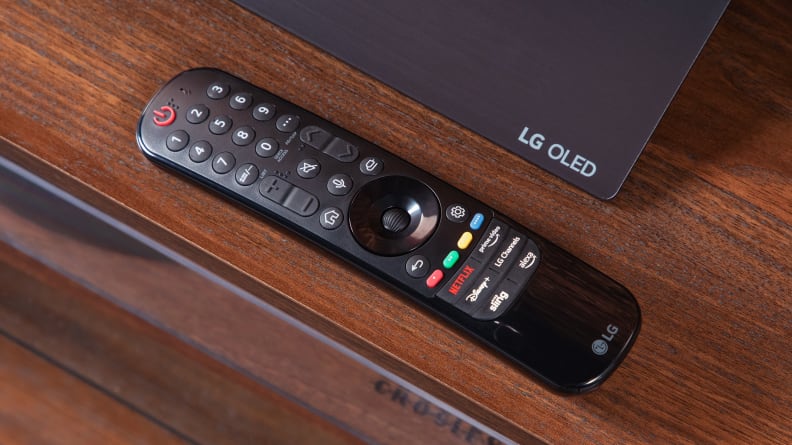
The Magic Remote operates like a traditional remote but also can be used as a wand.
- Resolution: 4K (3,840 x 2,160)
- Display type: OLED
- HDR support: Dolby Vision, HDR10, HLG
- Dolby Atmos: Yes
- eARC support: Yes (HDMI 2)
- Native refresh rate: 120Hz
- Smart platform: webOS 23
- Color: DCI-P3 color space/10-bit chroma resolution
- Variable Refresh Rate (VRR): Yes
- Auto Low Latency Mode (ALLM): Yes
- Processor: a9 AI Processor Gen6
- Other features: AMD FreeSync Premium Pro, Nvidia G-Sync compatibility, Game Optimizer, Filmmaker Mode, Amazon Alexa, Google Assistant, Apple AirPlay, Apple Home, hands-free voice control
The C3 ships with the newest version of LG’s Magic Remote, but it’s almost identical to the version that came with LG’s OLED TVs last year. It works the same as a traditional remote, but there are motion-activated controls that allow you to use it as a wand. Simply wiggle the remote to activate the feature, and the on-screen cursor will track your hand movements. This functionality is quite convenient whenever you have an on-screen keyboard to contend with.
Connectivity
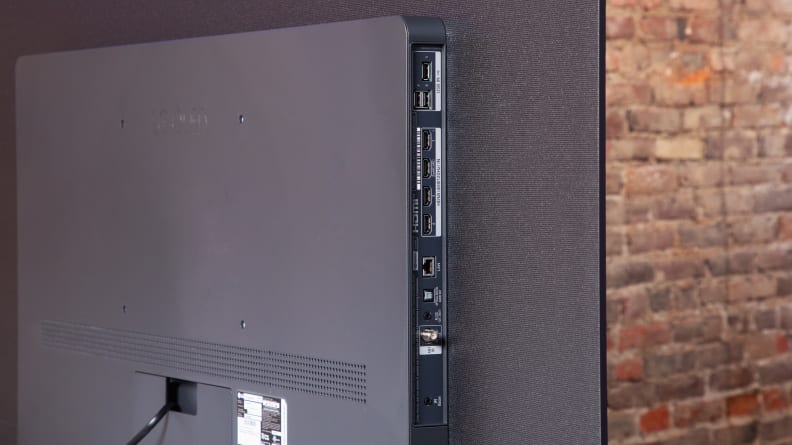
Four HDMI and three USB ports are part of the LG's broad selection of connectivity options.
Being a top-tier TV, the LG C3 is equipped with plenty of connectivity options for gamers and home theater enthusiasts. Here’s what you’ll find on a side-facing compartment on the back of the C3’s panel:
- 4x HDMI 2.1 (4K @ 120Hz, 1x HDMI ARC/eARC)
- 3x USB 2.0
- RF connection (cable/antenna)
- Ethernet (LAN) input
- Composite input (with adapter)
- RS-232C
Performance Data
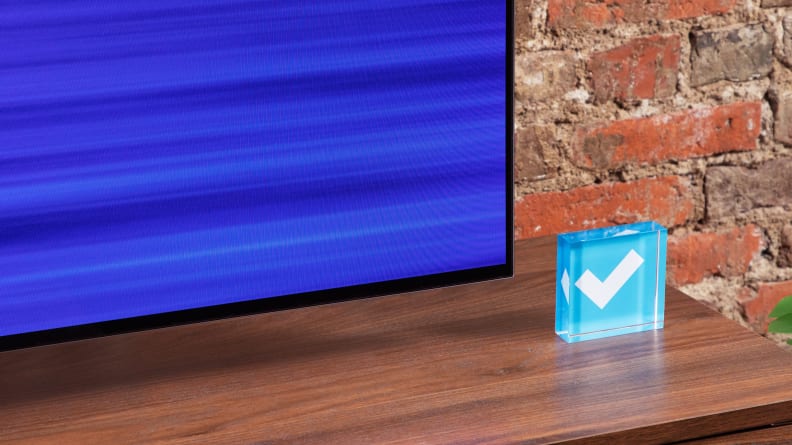
We tested contrast, peak brightness, and color gamut coverage, as well as input lag.
Before testing each TV, we make sure the panel is on and receiving a continuous signal for at least 2 hours. Our 65-inch LG C3 received this standard warm-up time before any readings were taken. In addition, the TV received the latest firmware updates at the time of testing.
For both SDR and HDR tests, we’re using LG’s Filmmaker picture mode. We’ve chosen this setting because of its accuracy, but performance may vary depending on which picture mode is enabled. For example, you might experience a brighter picture with a different mode enabled, but it may negatively affect color temperature and overall color accuracy.
For further context, I also ran tests while the C3 was set to its Cinema and Cinema Home picture modes, though those results are not outlined below.
To get a sense of the TV’s average performance, we use a standard ANSI checkerboard pattern for most of our basic contrast tests. We also use white and black windows ranging from 2% to 100% to test how well the contrast holds up while displaying varying degrees of brightness.
Our peak brightness measurements are taken with sustained windows ranging in size from 2% to 100% (full screen) to represent the TV’s peak brightness over a sustained period of time. Specular highlights (like brief flashes of reflected light) might reach higher brightness levels, but not for sustained periods of time.
All of our tests are created with a Murideo Seven 8K signal generator and tabulated via Portrait Displays’ Calman Ultimate color calibration software.
I'll expand on our test results throughout the review, but for now, here are some key takeaways:
- HDR contrast (brightness/black level): 270 nits/0.0001 nits (ANSI checkerboard)
- SDR contrast (brightness/black level): 337.7 nits/0.0001 nits (ANSI checkerboard)
- HDR peak brightness (sustained): 799.8 nits (2% white window)
- HDR color gamut coverage (DCI-P3 1976 uv/10-bit): 99.14%
- HDR color gamut coverage (BT.2020 1976 uv): 75.47%
- SDR color gamut coverage (Rec.709): 100%
- Input lag (4K/60Hz, Prevent Input Lag Delay set to Standard): 13.6ms
- Input lag (4K/60Hz, Prevent Input Lag Delay set to Boost): 9.8ms
Before testing, I made sure to disable the C3’s Energy Saving option so that its picture would not be adjusted based on ambient light conditions. This year, the Energy Saving menu is prominently displayed in the C3’s General settings menu.
To get a sense of the TV’s performance at peak brightness, the C3’s Peak Brightness setting was set to High, and during SDR testing, the OLED Pixel Brightness slider was pushed to 100. Additional brightness settings (like Adjust Contrast and Black Level) were kept at their default position, while Auto Dynamic Contrast, Dynamic Tone Mapping, Expression Enhancer, and Motion Eye Care were disabled.
For the C3’s Clarity settings, I lowered the TV’s Sharpness slider to 0 and disabled all motion enhancement settings, including Real Cinema. Lastly, the TV's AI Service settings were disabled, including AI Picture Pro, AI Brightness Settings, and AI Genre Selection.
What we like
Incredible contrast and punchy highlights
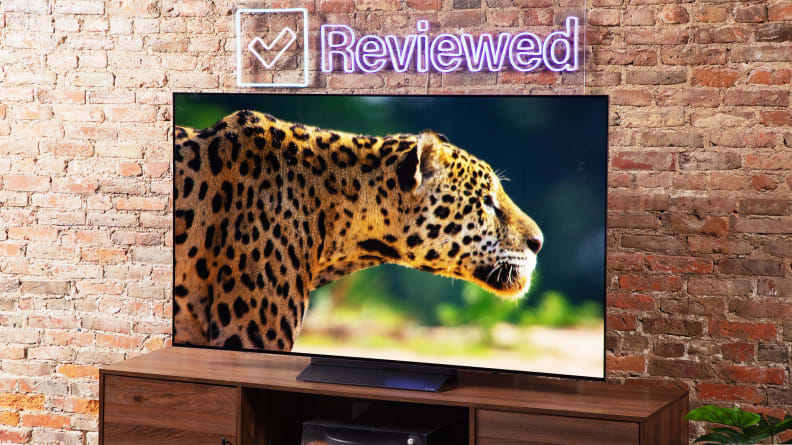
The TV has perfect black levels, and the brightness is magical during HDR content.
Reviewing an OLED TV has its perks, and one of them is knowing in advance just how sensational the contrast will be. OLED pixels are self-illuminating, allowing them to produce perfect black levels. And when you’ve got perfect black levels, everything looks better.
For the second year in a row, LG’s C Series OLED is built around the brand’s OLED evo display technology. It’s a combination of hardware and software, combining a brightness-boosting LG OLED panel with enhanced picture processing software. This secret sauce helped elevate the C2 over its predecessor, the LG C1, and it’s just as welcome here, even if the impact isn’t as substantial this time around.
Once again, the C3’s full-picture brightness is typically at its highest during average SDR content (like cable programming and most streaming shows). Like most OLEDs, the C3 gets dimmer as it approaches full-field white, so brighter scenes tend to be dimmer than average-lit scenes. Still, for casual, daytime viewing, the C3 should be fine (unless your room is particularly sunny).
The real magic happens during HDR content, where the C3’s added brightness makes the most impact. In HDR, on a relatively small, 2% white window, the C3 produced 800 nits of brightness—almost on the dot. When paired with perfect black levels, this is more than enough luminance for small highlights to truly pop, and that’s a big part of what HDR is all about.
If you’re lucky enough to be watching a baseball broadcast in HDR, the high-powered lights of a Major League ballpark glinting off the surface of a glossy batting helmet is a remarkable sight on an OLED TV. These bright, punctuated highlights, combined with the unparalleled contrast of OLED, create an incredible sense of depth and clarity. There’s no light bloom coming off of that reflection, either, since each pixel on the display is self-illuminating.
The same can be said for cinematic content. HDR10 and Dolby Vision content on the C3 look stunning. Near-black performance seems to have improved year over year, as the C3 looked more adept at limiting the blocky visual artifacts I’ve often seen during dark scenes on the C2 (and more so on the C1). I spent some time watching sequences where I’ve noticed such artifacts in the past (a handful of sequences in Interstellar and during the climax of Spider-Man: Homecoming), and to my eye, they looked cleaner on the C3 than its predecessors. As is usually the case, you’re more likely to see some of these quirks while streaming content, particularly sub-4K content.
And that brings me to an important question: Is the C3 brighter than the C2? Based on what I measured, it technically is, but I’m not sure many folks would notice an immediate difference in a side-by-side comparison. The real difference in performance—however slight—lies in the behind-the-scenes work carried out by the C3’s picture processing.
Superb color with excellent out-of-the-box accuracy
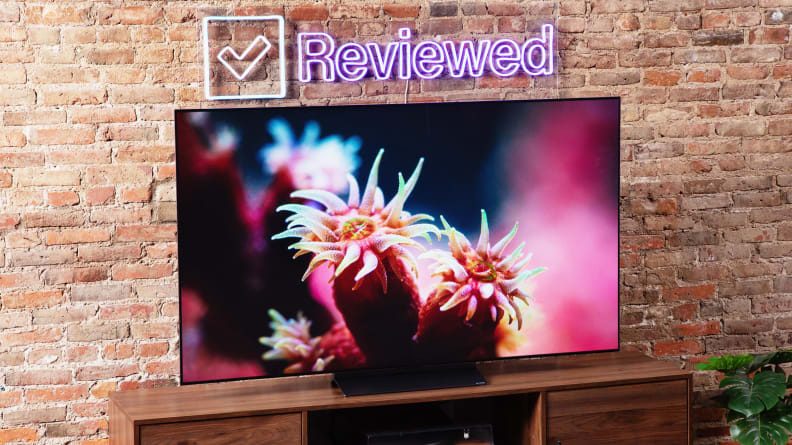
The C3's vibrancy is nothing short of astonishing.
On the C3, vibrant, colorful content is a feast for the eyes, and movies mastered in HDR are the most sumptuous. I spent far too much time zoning out to multicolored sequences in Guardians of the Galaxy: Vol. 2, for instance; the combination of high-contrast and rich, saturated color go together like peanut butter and jelly.
The C3 covers an impressive 99% of the HDR color gamut (DCI-P3), and more importantly, its out-of-the-box color accuracy is phenomenal in both Filmmaker mode and Cinema mode. I measured an average DeltaE (a measurement that determines perceptible color error) of around 3 for primary and secondary color points, which is the threshold of what’s noticeable to most people.
The only flaw I could find was quite minor: The C3’s out-of-the-box white point in its most accurate picture mode is a touch too green. Still, most people wouldn’t notice this during real-world viewing.
An excellent TV for dedicated gamers
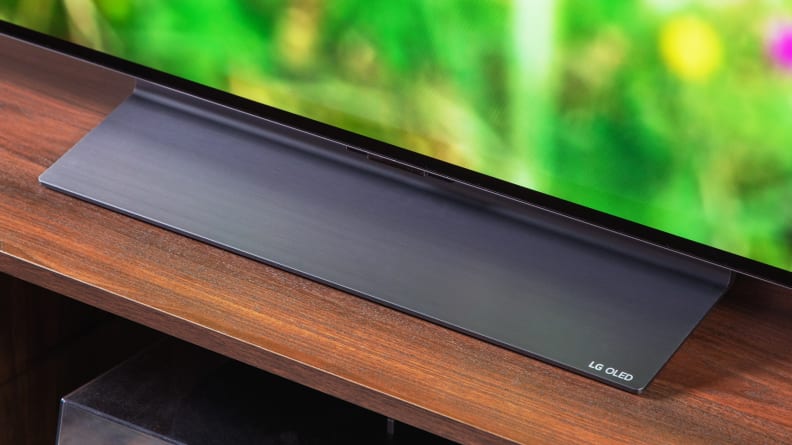
Right on brand, the optimizations for gamers are top-tier.
LG enjoys a long legacy of providing gamers with some of the best TVs in the business, and the C3 lives up to those expectations.
Each of the TV’s four HDMI 2.1 inputs support 4K gaming at 120Hz, Auto Low Latency Mode (ALLM), Variable Refresh Rate (VRR), FreeSync Premium Pro, and G-Sync compatibility. With ALLM enabled, the C3 automatically optimizes the TV for gaming whenever a console is detected, and toggleable features like FreeSync and VRR ensure that current-gen games are rendered smoothly, free of visual artifacts like screen tearing.
The fact that all four of its inputs are optimized for gaming is key; gamers are free to connect up to three gaming consoles and an eARC-enabled soundbar while still enjoying the benefits of the C3’s gaming features.
In addition, this marks the third year that LG C Series OLEDs have arrived with Game Optimizer, a quick-to-access software suite that puts all of the TV’s gaming-related settings right at your fingertips so you don’t have to fumble with too many menus mid-game. Game Optimizer relays the current frame rate, lets you toggle the TV’s input lag settings, and allows you to make finer adjustments to the TV’s picture depending on the type of game you’re playing.
The C3 also delivers incredibly low input lag, especially when the Game Optimizer’s Boost setting is enabled. While receiving both a 60Hz and 120Hz signal, we measured an input lag of 9.8 milliseconds while the Boost setting was turned on.
Improved uniformity
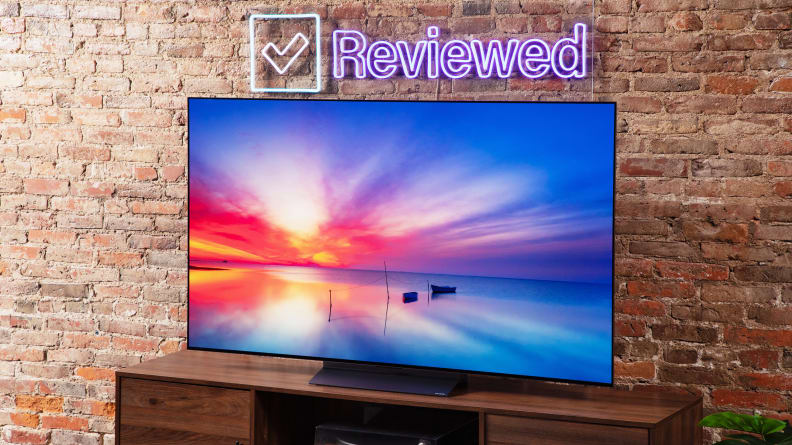
The panel seems to avoid some of the quirks of LG OLEDs in the past.
While keeping in mind the caveat that every panel is different, it’s worth noting how impressed I was with the C3’s uniformity. I did not spot any vertical or horizontal banding on various gray slides, nor did I notice any magenta-colored tint on the panel’s sides (an issue that’s affected LG OLEDs in the past). There is some color-shifting during off-axis viewing (and I’ll delve into this shortly), but my panel seemed free of the quirks I’ve often noticed during head-on viewing, especially when neutral tones (like white and gray) take up large swaths of the picture.
I must reiterate, however, that every panel is different, and there’s no guarantee that the C3 you end up with will look exactly as the one I reviewed. It’s also worth noting that, to a certain degree, panel variance is a factor no matter what brand you shop, or what display technology you’re working with. A high-end QLED TV, for instance, is liable to have its own uniformity-related quirks.
Thin, lightweight design
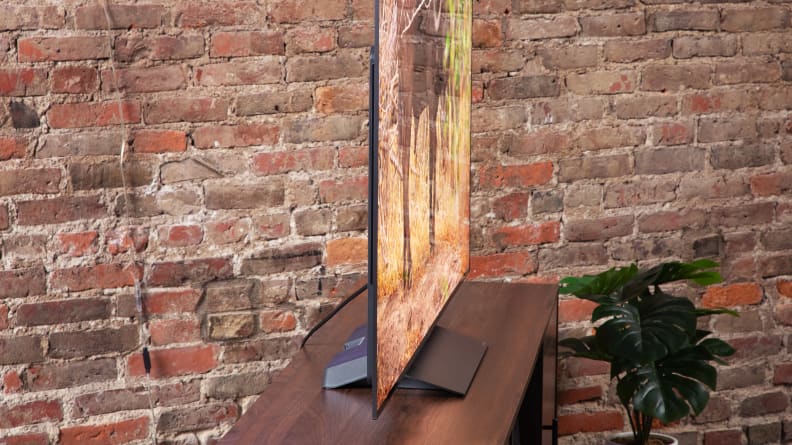
Svelte and sleek, the LG C3 is easy to assemble and easy on the eyes.
Like its predecessor, the LG C3 is fitted with a lightweight, composite fiber material that makes assembly and repositioning an easy affair without detracting from the TV’s visual appeal. At its thinnest, its panel is a touch thicker than my iPhone, with sharp, well-defined corners instead of rounded edges. All of the connectivity options are arranged neatly alongside the narrow, box-shaped chassis that sits flush against the back of the panel. They’re easily accessible should you happen to wall-mount the TV.
The metallic, downward-sloping slab that props the panel up from its center provides about two inches of soundbar clearance. It’s more soundbar-friendly than the LG C1, but folks with tall soundbars might find that they obstruct the picture. This stand style introduces a minor amount of wobble whenever the panel is jostled, but it’s not sensitive enough that it wobbles on account of nearby footsteps.
From a purely aesthetic perspective, the C3 is a fantastic-looking object. Its ultra-thin panel and elegant stand look as fancy as they ought to, given the TV’s price tag.
What we don’t like
Not the brightest OLED on the block
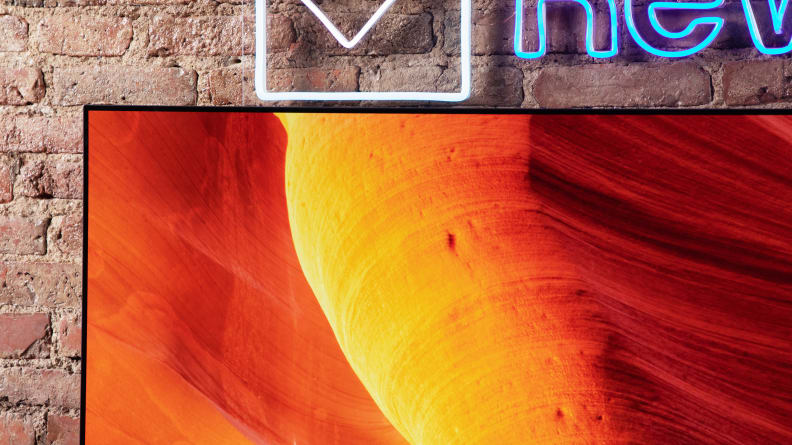
This model isn't the brightest out there, after the emergence of QD-OLED.
Despite dishing out some seriously punchy highlights in HDR, it’s no secret that there’s a brighter OLED technology in town these days. QD-OLED TVs that incorporate quantum dots have upped the ante since their debut last year, and while TVs like last year’s Sony A95K and the recently released Samsung S95C are pricier propositions than the C3, they offer higher brightness, at least when it comes to specular highlights.
This is complicated by the fact that the first QD-OLED TV to hit the market last year, the Samsung S95B, is currently on sale for less than the cost of a brand new LG C3. That TV had a few quirks of its own, but if a brighter OLED is what you’re after, it’s still available—and it’s heavily discounted.
And then there’s the Samsung S90C, whose release is imminent. This QD-OLED TV is a step down from the S95C, and by the looks of it, it’s designed to compete directly with the LG C3. When it’s available, a 55-inch version will cost exactly the same as the 55-inch C3 currently costs. We won’t know for sure if the S90C will be as bright as the other QD-OLEDs we’ve tested, but there’s a good possibility that it will be brighter than the C3, on the basis of its display technology alone.
You could also spend up on the all-new LG G3. We’ve yet to test a G3, but according to LG, it’s reportedly 70% brighter than previous LG B Series OLEDs, and based on our in-person impressions at different events this looks to be accurate. It’s thanks to a new type of OLED panel layer called MLA (Micro Lens Array) that better focuses brightness toward the viewer. Unsurprisingly, however, this perk is priced at a premium; a 55-inch G3 is about $600 more than a 55-inch C3.
I want to be clear: I don’t think the C3 is too dim for most people. It’s bright enough to hold up during the day in most rooms, and its HDR highlights look fantastic, especially when the room is dark. But if LG’s top-shelf OLED is substantially brighter than the C Series, and if LG’s competitors continue to price QD-OLED TVs aggressively, the C Series might be on the verge of losing some of its luster—at least for shoppers who are looking for the brightest possible OLED experience.
There are better daily drivers than LG’s smart platform
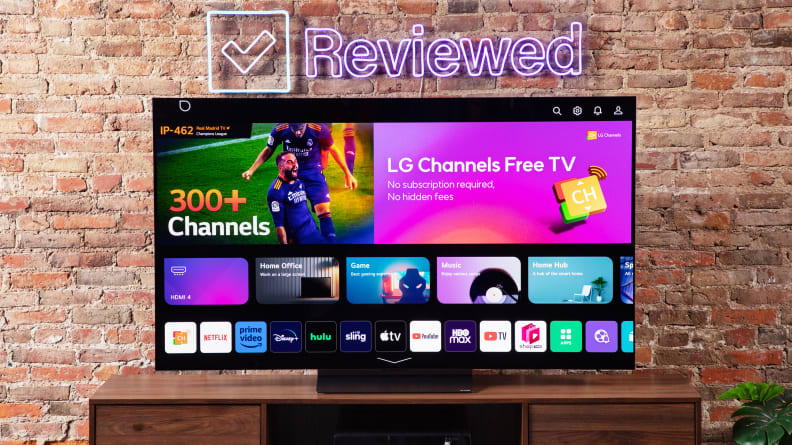
While robust and fast to navigate, the webOS is not the most streamlined.
First, let’s talk about the good news. LG’s smart platform, webOS, is considerably faster than it’s been in recent years. Navigation is snappy and there’s hardly any delay in switching from one app to another.
That said, I find the webOS layout to be a more-cluttered version of Google TV, a software suite I would readily recommend as a daily driver. There’s a generous amount of sponsored content to contend with, the bulk of which are placed below the main app bar. And while the same can be said for Google TV (and most smart platforms aside from Roku), I find the advertisements easier to ignore on competing platforms. Comparatively speaking, webOS is a bit more disorganized. There are dedicated sections for music-, sports-, and game-related content, but these sections focus on recommendations you might not want or need.
There’s no doubt that webOS’s app library is robust enough to cover most people’s needs, but the overall experience is not as straightforward as some of the outside options. If you can spare the HDMI port, I recommend investing in a Roku Ultra (or something similar).
Minor color shifting during off-axis viewing
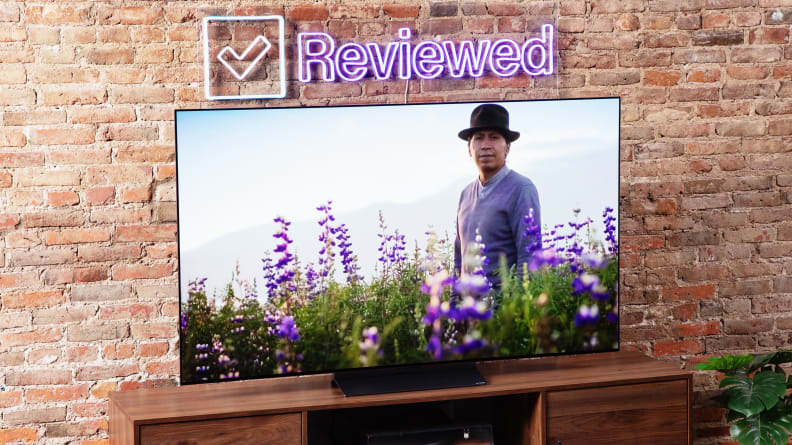
The C3 exhibits some of the same subtle color shifting found in previous LGs, if lessened.
When white (or near-white) visual elements make up the majority of the picture and you’re viewing the C3 from off to its side, you might notice those shades shifting into pink. This is a phenomenon I’ve witnessed on both the C2 and the C1, but I’m relieved to report that the effect is more subtle this year than it was in previous years.
It’s my belief that the effect has something to do with the panel’s anti-reflective coating, and thankfully, it’s only visible when sitting 25° to 45°. Nevertheless, over the last few years, I’ve been impressed by the lack of such tinting on Sony and Samsung OLEDs, if only because I’m quite used to seeing it on newer LG OLEDs.
Once again: The effect is very subtle and only makes itself known when a very specific set of circumstances are met. I can imagine it being a bit of a drag, however, if you’re hosting a large group of people to watch hockey, or something that takes place largely in snowy landscapes.
Should you buy the LG C3?
Yes—it’s one of the best TVs of the year
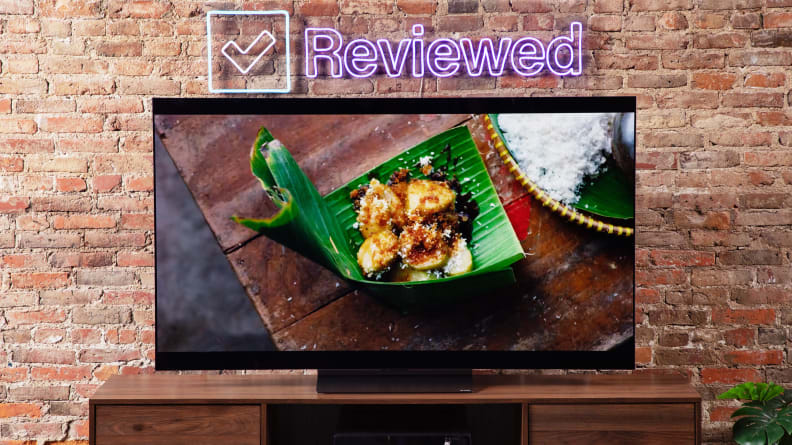
Absolutely, get this.
The LG C3 lives up to the legacy of the award-winning C Series OLEDs that came before it. It’s an excellent choice if you’re shopping in a high-end price bracket, but would rather avoid splashing out on the most expensive TVs the industry has to offer. From its incredible picture quality to its class-leading gaming support, the C3 is one of the year’s best TVs.
The C2 may have represented a bigger leap forward for the series than the C3, but it’s hard to hold that against the C3 given its quality of performance and its exhaustive selection of features.
That said, if you were holding out for the C3 in the hopes that it might deliver a substantially better experience than its most recent predecessor, you might be better off saving some money and investing in the C2. Other than the C3’s new chipset, some picture processing upgrades, and its DTS audio support, they’re remarkably similar TVs.
While OLED TVs across the board aren’t as bright as some of the more powerful LED TVs, there are brighter OLEDs than the C3 available now or coming soon, should that interest you. Still, unless you settle for a discounted 2022 model (or commit to spending more on something like the LG G3), it might end up being the case that the Samsung S90C is the only 2023 OLED that costs the same as the C3 while still offering higher peak brightness. Of course, we won’t know for sure until we review more newly released OLEDs.
If you’re familiar with the recent history of LG’s C Series lineup, it should come as no surprise that the latest iteration is, predictably, a sensational TV in almost every use case. It doesn’t tweak the formula as much as last year’s version, but as of now, it doesn’t have to. With so much competition, though, tweaking the formula might be a necessity next year.
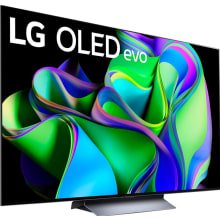
The LG C Series OLED returns with incredible contrast, vivid and accurate color, and gaming features galore.
Meet the tester
Michael Desjardin graduated from Emerson College after having studied media production and screenwriting. He specializes in tech for Reviewed, but also loves film criticism, weird ambient music, cooking, and food in general.
Checking our work.
Our team is here to help you buy the best stuff and love what you own. Our writers, editors, and experts obsess over the products we cover to make sure you're confident and satisfied. Have a different opinion about something we recommend? Email us and we'll compare notes.
Shoot us an email
